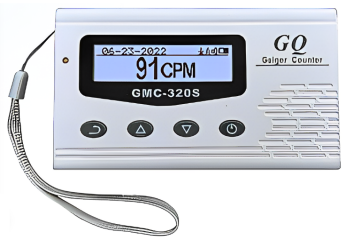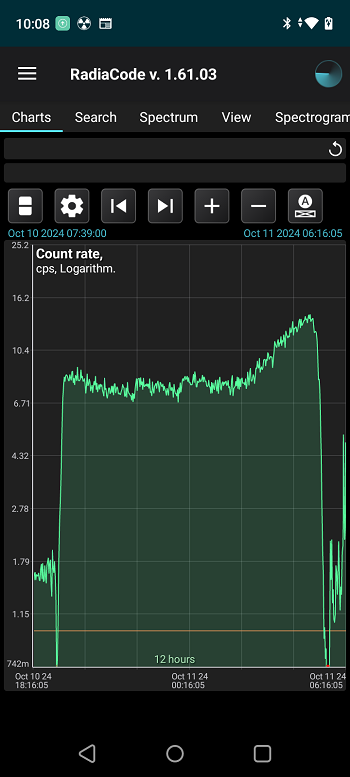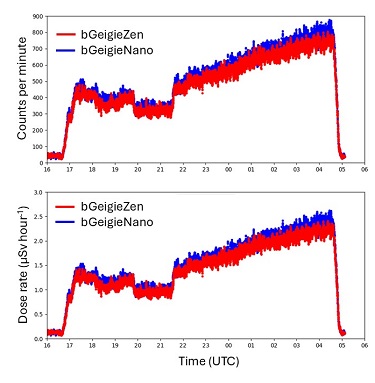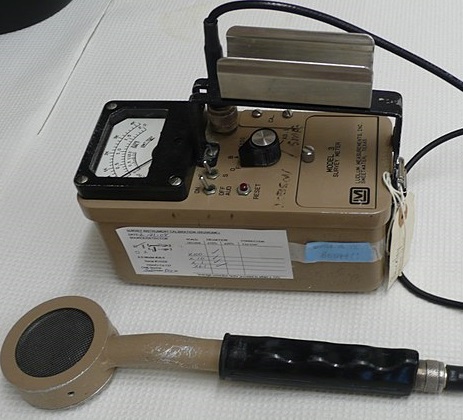Dr Zoomie! I’ve been interested in an inexpensive radiation instrument for myself – not to make scientific measurements or to meet regulatory requirements, but more a way to learn a little more about the world around me. I see a lot I can buy online, but I’m not sure if they’re any good or if I’d just be wasting my money. Is there anything you can recommend – preferably something you’ve got experience with? Thanks!
You know, I started looking into this when I was talking with Andy Buffler, the scientist with the Cosmic On Air citizen-science project I wrote about when I was in South Africa. There are a few instruments they recommend and a few others I’ve used myself; let me tell you a little about them. I will also say that there are a lot of cheap radiation detectors to be found on Amazon, eBay, and other such markets – with these, I urge a degree of caution. If you’re just curiuos about qualitative data (i.e. “readings are higher next to this granite building than in the park”) then the accuracy isn’t as important as the overall reliability – you want something that will keep working reliably (even if not quite numerically accurate) for a long time. But if you’re looking for something that gives you accurate information that you can use for making decisions (e.g. “does this cool antique pose a possible threat to my health”) then you’re also looking for an instrument closer to what I use at work. So let me start with the used radiation meter market and then I’ll look at a few specific low(ish)-cost instruments that give reasonably good readings.
So…in my consulting days I was looking to pick up some decent radiation instruments at a reasonable cost to use for my consulting as well as for teaching. I’m a long-time lover of Ludlum; I’ve been using their instruments for over 40 years and I’ve found them to be reliable, rugged, and reasonably priced – they’re what I’ve repeatedly purchased for my own use as well as for various places I’ve worked at as an RSO and a health physicist for various agencies I’ve worked for. Having said that, “reasonably priced” for a company or government agency is not necessarily “reasonably priced” for an individual. A basic Ludlum instrument and a detector or two is likely to run a few thousand dollars. Most of the time – it’s often possible to pick up Ludlums at a relative pittance on eBay, sold by firms or individuals who buy them in bulk from government agencies who no longer need them, and then resell them at a profit. The Ludlums I bought for myself – I got them at only about a quarter the price of a new item. Here’s what you need to watch out for, though – most of these instruments will be in working order (although read the description very carefully to see what the seller promises), but they might not be calibrated and they might not be in the best of shape. In my case, some of the meters I bought looked as though they’d lived a hard life – but when I sent them for calibration they all passed with flying colors and, 15 or so years later, I’m still using them. Here, the thing to look for is to see if the folks selling them are full-time radiation safety types or if they just buy whatever excess government stuff they can find. A full-time radiation professional is more likely to take the time to do minor repairs, check the functioning of the instruments they’re selling, and to send you something that’s in reasonably good shape.
As far as buying low-cost new instruments…I should start by noting that I come from the perspective that a “low-cost” professional-level radiation detector starts off at a few thousand dollars, and the instruments I use at work include a few that cost between $3000-$5000, some that cost in the tens of thousands of dollars, one that runs about $50,000, an one that cost over $100,000. So from my perspective as a radiation safety professional, a $1500 instrument is quite reasonable in cost, even if I would balk at buying one for my private (non-professional) use.
GQ Electronics makes a fairly simple instrument based on a Geiger Muller (GM) detector. They’ve got a few different models; the one I’ve used is the GMC 320S.

GM tubes are pretty rugged and reliable and the instrument I tried seems to be fairly stable (that is, the readings are relatively steady and don’t fluctuate more than I’d expect from any GM detector). The overall design comes across as a bit on the light side, but you can connect it to a USB port on your computer and, using a decent computer app, you can see the display, control the instrument, and even download data for analysis. That, plus the fact that you can buy the instrument and app for under $100, makes this a fairly good deal. One caution – the radiation dose rates displayed are unlikely to be highly accurate but, if all you want to do is to see where dose rates are higher or lower than normal, this will do the trick. And if you log the data and don’t mind taking the time, you can collect GPS data using an offline GPS tracking app such as GPS Logger to put together a map of your readings as you wander around your city, take a flight, or go on a cross-country drive.
A step up from the GMC 320S is the snazzy little Radiacode, which you can find on Amazon as well as purchasing from the company. This uses a a scintillation crystal to give readings in count rate and dose rate, but it will also show the energies of the gamma rays it detects – you can use it to produce a gamma spectrum and to identify any nuclides you detect. The crystal is not very large (about 1 cm x 1 cm) and it takes some time to collect a good spectrum. But I was able to ID some gamma peaks from a natural background spectrum after about a half hour, and much more quickly for some radioactive minerals and sources in my collection. This one also lets you log data that can be added to location information collected by the GPS app I mentioned. The Radiacode is physically smaller than the GQ instrument, but it’s more solidly built and feels more solid. Oh – and the software is free…but the instrument itself will set you back about $345 on Amazon and slightly less on the Radiacode website. Two of the devices (the 102 and 103) use a CsI scintillation crystal; the third (the 103G) uses a newer type of detector called GAGG (for gadolinium, aluminum, germanium, garnet) that looks really interesting as described in the scientific literature, but I’ve not used it so I can’t say anything from my own experience.

With the app, you can get quite a bit of information from this and, in spite of the higher price, it’s a good bargain – especially given all that you can do with the software. And did I mention that you can connect this one to your computer’s USB port or you can log data on the instrument itself? I’m not sure how much it will store onboard, but I collected over 24 hours’ worth of data on my computer, giving me a remarkably good background spectrum, even with such a tiny crystal.
The other one I wanted to mention is made by a Japanese company – it’s called bGeigieZen and it comes as a kit that you need to assemble yourself (having said that, assembly isn’t very difficult). Of these three detectors, this is the most expensive at $475 (for the kit – an assembled model costs $750), and it only includes a GM so you can’t do spectroscopy as you can with the RadiaCode. On the other hand, it comes with on-board GPS, so if you want to map your readings you don’t need to assemble the data (GPS from your GPS logger and radiological data from your data logger) manually. It’s also got a larger GM tube than the GQ device so the data should be a little less scattered and it’s got onboard data logging. This one costs more than the others, but it’s got a lot going for it.

If you’re looking for a professional-level instrument you’re going to have to spend more and, ironically, the onboard data logging will be harder to do and there will likely be less ability to plug into your computer to visualize or to work with the data. But if you’re making readings for scientific work or to show compliance with regulatory requirements then you’ll need to shell out the extra money for a much better instrument. Otherwise, any of the ones I mentioned here ought to help you satisfy your curiosity about the radiological environment in which we all live.
And after all of this, a quick tip for those looking for radiation instruments on eBay. If you’re looking for Ludlum instruments, try the search terms “Ludlum radiation” – otherwise you’ll end up with a lot of spy novels!
